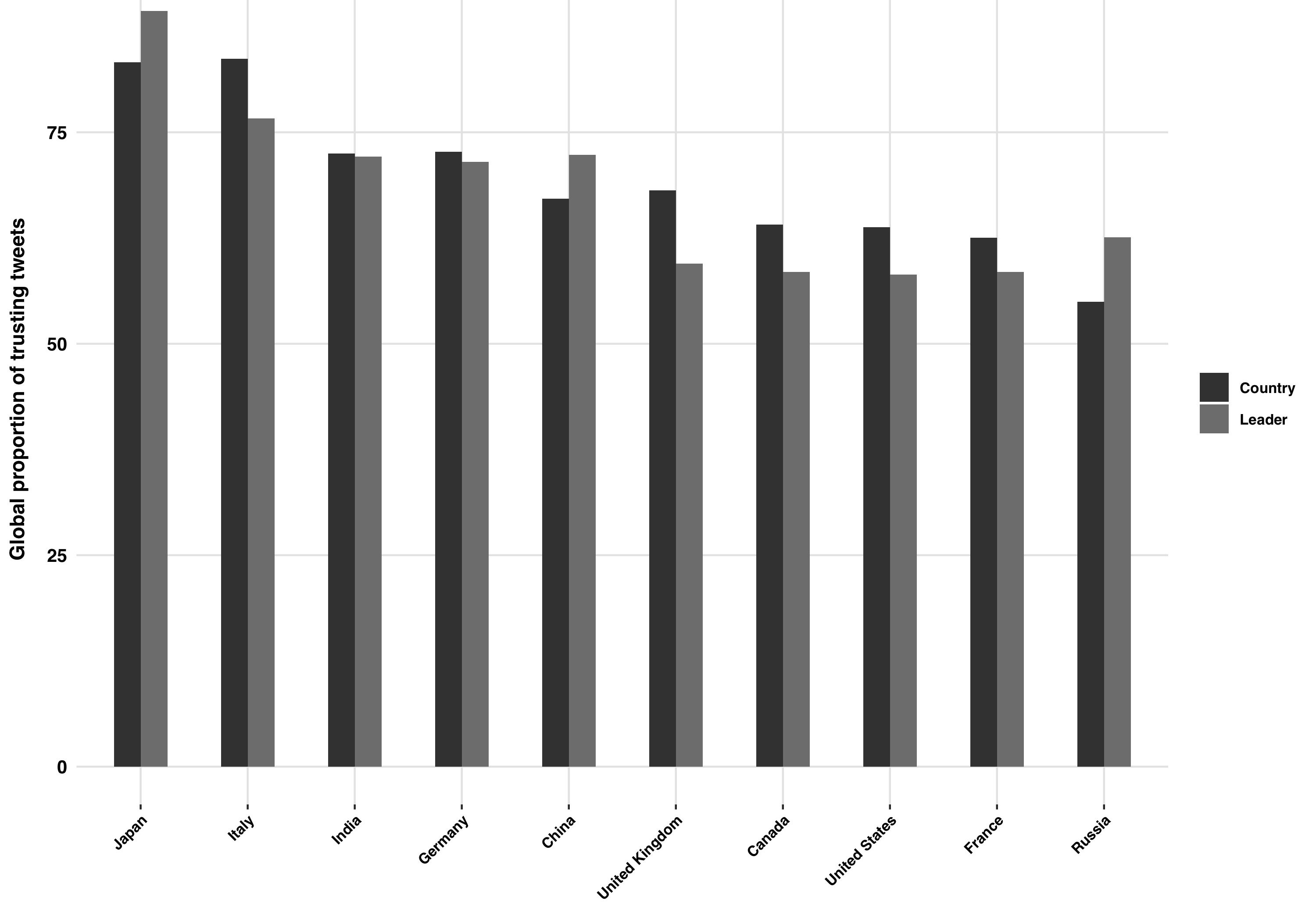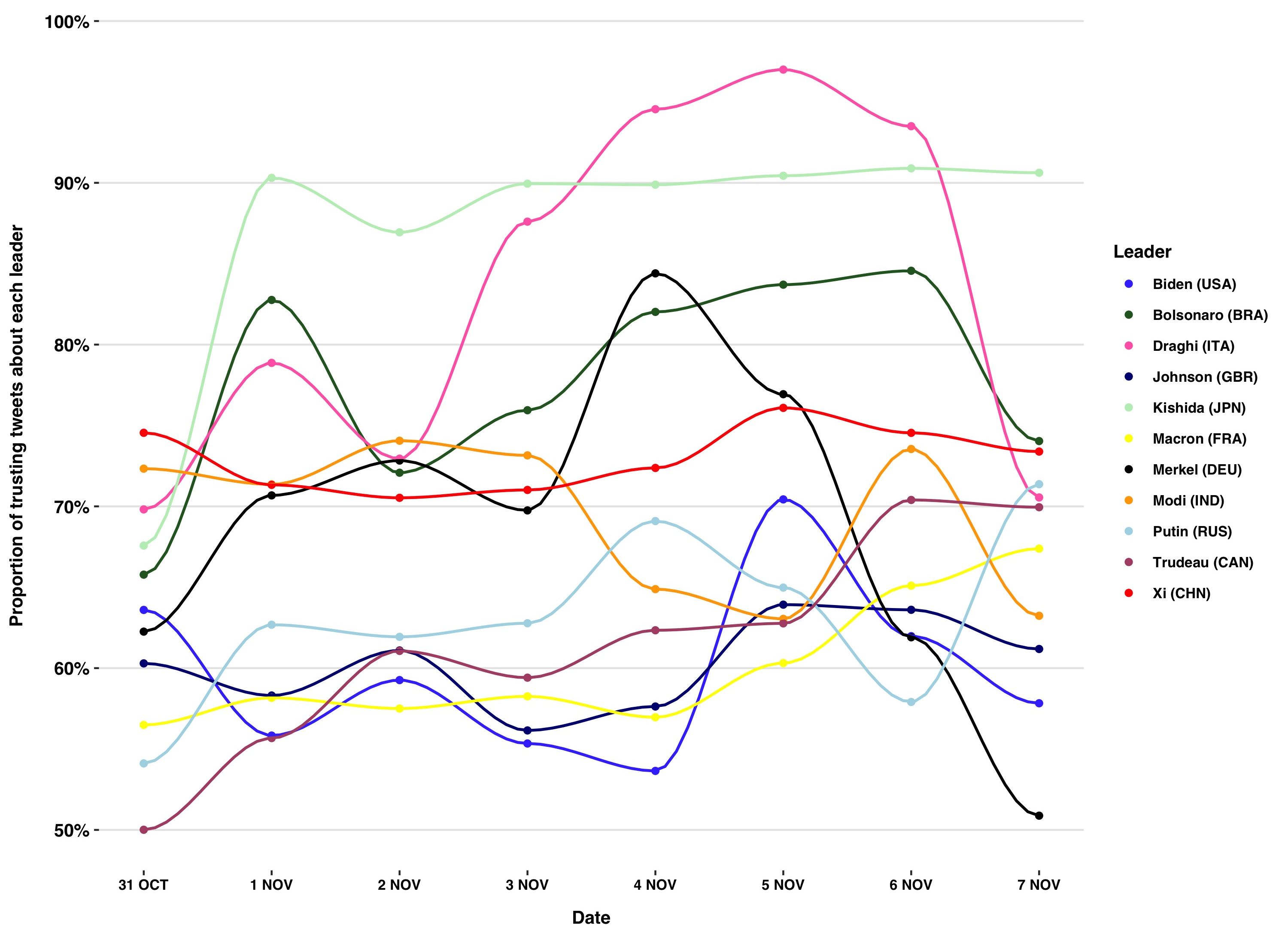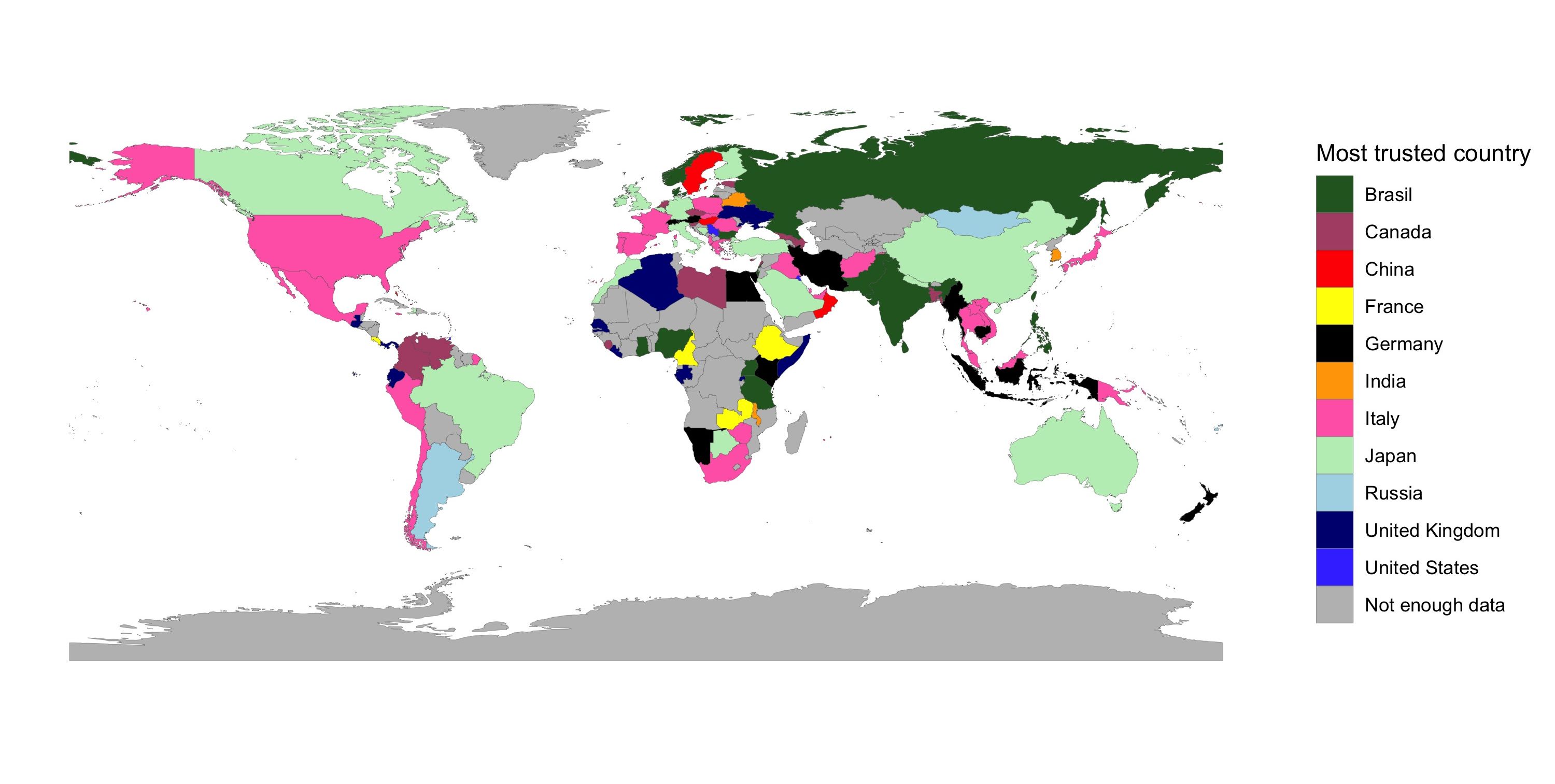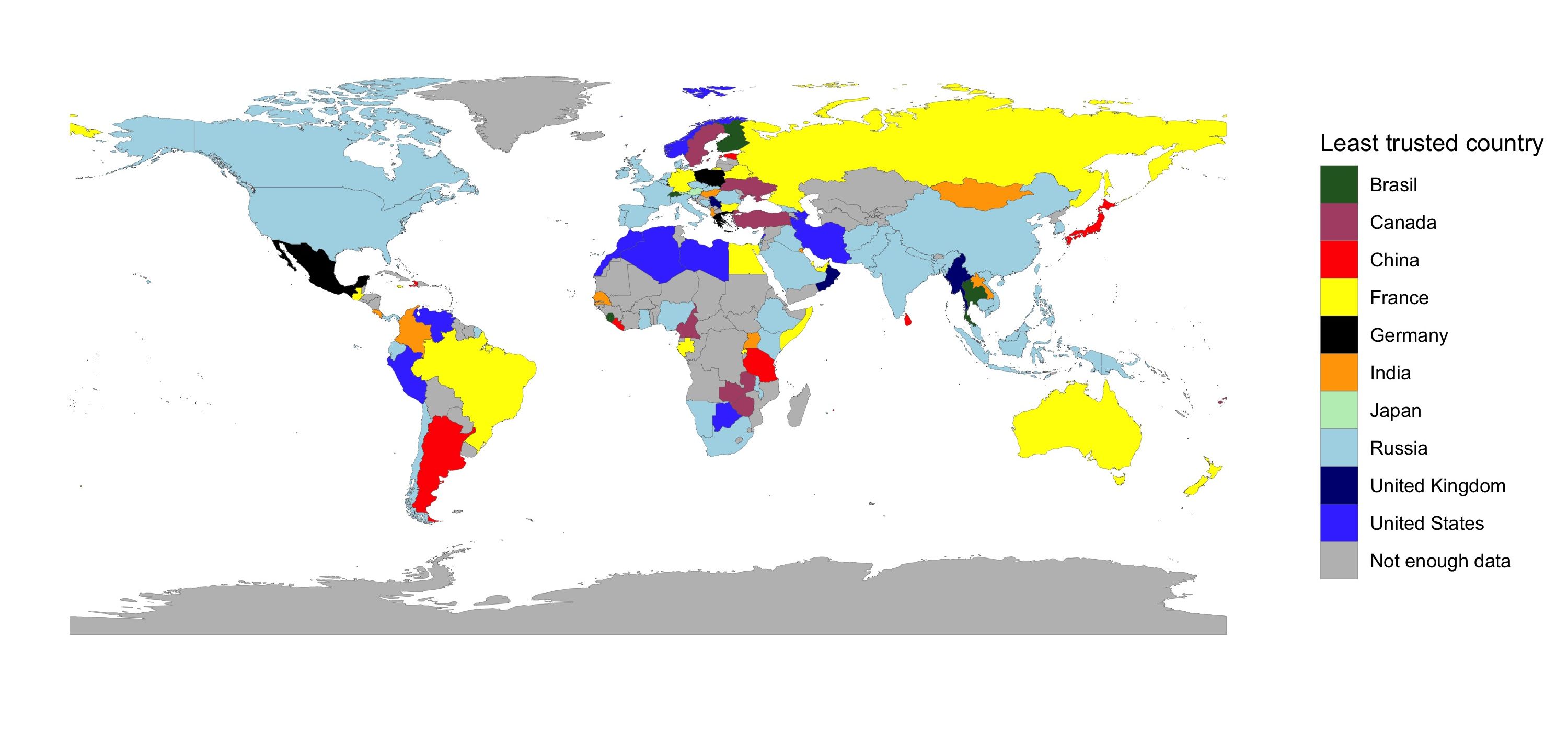Who Trusts Whom on COP26?

Promises are easy to make but hard to keep
This is nowhere better demonstrated than with respect to tackling climate change. Though most people agree that the climate emergency is one of the pressing issues facing the world today, limiting global heating often involves curbing economic productivity. The result is that political leaders can be incentivised to talk a big game about climate change, but not to act on what they say.
The result is a trust crisis. The public doesn’t trust leaders, leaders don’t trust each other, and countries distrust other countries. But how much?
Texture. AI’s Approach
Texture AI sought to measure this by establishing the trust profile of countries and national leaders over the course of COP26, the UN Framework Convention of Climate Change. Using Trust Hunter, a deep learning algorithm trained to human-level competence in TRUST estimation, we assessed the trust levels in 276773 tweets that mentioned G20 countries and national leaders in the context of COP26. The results paint an interesting picture.
Differences between trust in countries and trust in leaders
Firstly, there are clear differences between trust in countries and trust in leaders across all countries (Fig. 1). The leaders of Japan, Indonesia, China and Russia all polled higher in trust than their countries. With the exception of Japan, all these countries are authoritarian states with powerful leaders. This contrasts with the UK, where PM Boris Johnson is trusted less on climate change than the UK as a state. It may be that authoritarian states make people less willing to publicly express their distrust in political leaders.
Figure 1: Levels of trust in G20 countries and national leaders in tweets mentioning either in the context of the COP26 conference over the dates of the conference

Changes in trust level over the course of the COP26 conference
Secondly, there are considerable changes in trust level over the course of the COP26 conference (Fig. 2). Italian premier Mario Draghi had the largest oscillation, going from average levels of trust to the highest to average levels again. This may be because during the conference, Draghi urged global leaders to take “a quantum leap on the fight against climate change” and was clear about the need to reform global financial structures, to meet the climate crisis.
Prior to the conference, Japan’s Fumio Kishida has been pushing strongly for an Asia-wide zero emission effort in the build up to COP26 and his speech Kishida pledged $10 billion to support Asia's zero emission goal. Fumio Kishida is certainly the clear winner in personal trust ratings, to the extent that he rose from average levels of trust and plateaued from there.
Poor showings by Justin Trudeau, Joe Biden, Boris Johnson, and Emmanual Macron possibly signal electorates who are more committed to the agenda of COP26, and therefore more likely to criticise leaders failing to engage with it.
Figure 2: Change in trust levels in national leaders across the COP26 conference

How countries trust each other
Finally, there are intriguing variations in how countries trust each other. Figures 3 and 4 show, for a given country, the country it trusts most (Fig. 3) and trusts least (Fig. 4). Both Russia and India trust Brazil the most, possibly signaling a commonality of purpose between their authoritarian leaders. However, Brazil follows Canada, Australia, China, and much of the European Union in favoring Japan. Conversely, Russia is perhaps unsurprisingly distrusted by China, India, the USA, Canada, and most of Europe, while the USA is distrusted by geopolitical foes like Venezuela, Iran, and Libya. What is surprising is France’s poor performance. It may be that the recent AUKUS controversy soured Australia on France, and that Macron’s firm stances on Crimea and NATO have agitated old rivalries with Russia and Germany.
Figure 3: Each country’s most trusted other country on climate change. The colour of a country is the country it most trusts (for example, the USA trusts Italy most)

Figure 4: Each country’s most distrusted other country on climate change. The colour of a country is the country it most trusts (for example, Norway trusts the USA least)

What can we conclude from this analysis?
It is clear that trust is not distributed in a straightforward way. Countries are not trusted in the same way as their leaders, and patterns of trust seem to reflect political affinities and recent news stories. However, there are still clear winners and losers. Countries like Japan and Italy, despite not hosting the conference, come out strongly, possibly because of the convictions-led personal performances of leaders like Fumio Kishida and Mario Draghi. The UK does disappointingly poorly despite being the host country. There’s a lesson here for Boris Johnson, should he wish to heed it.
Contact us
If you or your organisation are interested in measuring trust, we would love to hear from you. Please get in touch with michael@texture.ai.